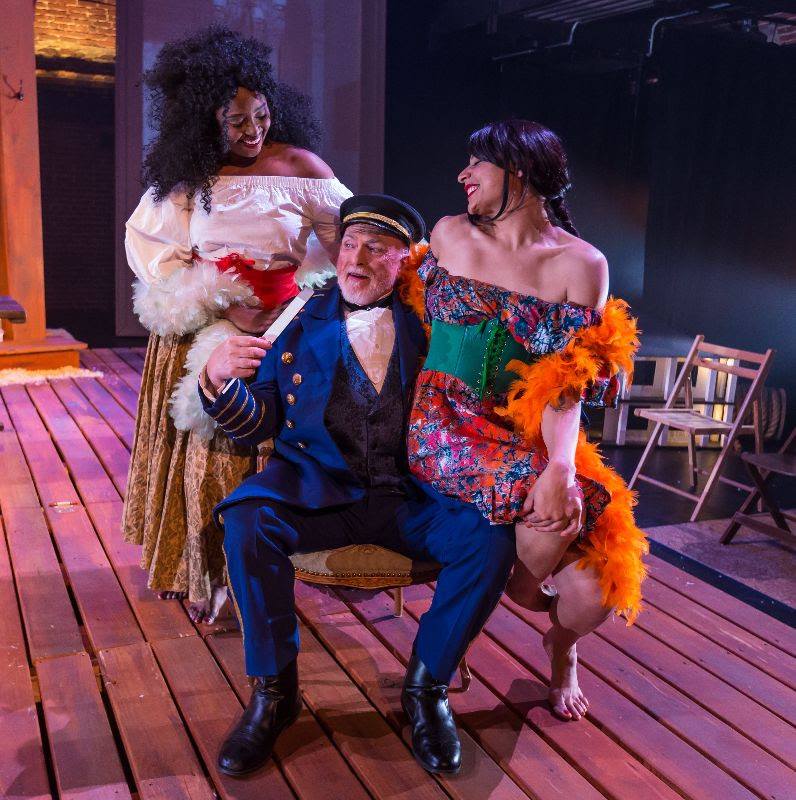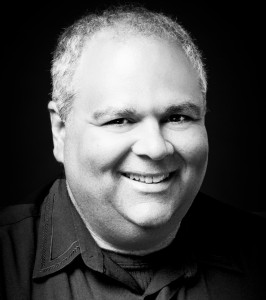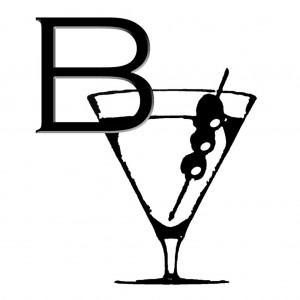By Michael “Buzz” Buzzelli, ‘Burgh Vivant
A Black playwright, Braden Jacobs-Jenkins (Ananias J. Dixon), AKA BJJ, attempts to revive Dion Boucicault’s melodramatic and grossly-outdated 1859 play, “An Octoroon,” with a fresh, contemporary spin.
In the opening monologue, BJJ explains his desire to remake the original play. He does it in a witty, metatextual way while slathering white makeup over his face. Soon, Boucicault (Martin Giles) enters. He is loud, boisterous and equally amusing. This time, however, the Caucasian actor is spreading red make up on his face to play an Indian, Wahnotee.
Side note: Wahnotee is referred to as an Indian or Injun and never as a Native American. This play purposely eschews politically correctness (to the Nth degree). Of course, the word used for the African American characters is much, much worse.
In a classic feather duster scene, two slave women, Minnie (Melessie Glack) and Dido (Kelsey Robinson) sweep the front porch while providing additional exposition. The audience quickly learns that the Terrebone Plantation in Louisiana is in transition. The owner has passed away, and his property has been handed over to his nephew George (Ananias J. Dixon). The two slaves also spend a little time gossiping about another female slave, Grace (Dominque Brock) who yearns to run away, even though she is pregnant.
At the heart of the show is an intriguing love triangle. George is being romantically pursued by Dora (Jenny Malarkey), a vapid, white daughter of a neighboring plantation, but he falls for Zoe (Sarah Hollis), the titular Octoroon, instead. At the time, it’s illegal for a white man to knowingly marry a Black woman.
Side note: An Octoroon is a person one-eighth black by descent. Technically, with a white father and Black mother, Zoe would have been called Mulatto. In modern times, she would just be called mixed race and there would be no reason to quantify the precise mix of melanin.
Meanwhile, the villainous M’Closky (Dixon again), seeks to purchase Terrebonne and its slaves, particularly Zoe. M’Closky lusts over the Octoroon. During a photography session, M’Closky finds papers that would grant freedom to the attractive and intelligent Zoe, but absconds with the documents and kills a young slave boy (Parag S. Gohel) to hide his deceit. Since he uses Wahnotee’s tomahawk as the murder weapon, the Indian is blamed for the homicide.
After a brief intermission, the action picks up pretty quickly. George is forced to sell off property…i.e. actual human beings…to keep Terrebonne.
A rich sea captain, Ratts (John Reilly) buys Minnie and Dido, but refuses to purchase Grace because she has a baby and another one on the way.
When Zoe heads to the auction block, things get messy. George and M’Closky fight over her.
Additional side note: If you were paying attention, you may have realized that George and M’Closky are both being played by the same actor. Their subsequent wrestling match is something that has to be seen to be believed.
It’s a delightfully loony adventure that, by the second act, barrels to the end.

Things don’t really get moving until after a prolonged but important prologue. The prologue first delivered by BJJ and later by Bouccicault (Martin Giles), sets up the entire piece. It’s necessary and entertaining exposition, even though it slows the action down. When Act I finally begins, the stage explodes with dynamic characters in interesting situations.
Director Andrew Paul has picked an excellent cast.
Dixon is wild over the top as the moustache-twirling M’Closky. He’s a cross between Harriet Beecher Stowe’s Simon Legree and Hanna Barbera’s Dick Dastardly sans Muttley.
Gohel is masterful as the servant, Pete. He’s the mewling, House Man sycophantically cowering before the white slave owner, and brimming with contempt for his fellow slaves in the field (the common pejorative for this type of character will not be used here). Gohel makes comedic use of this type of character. He is hilarious in every scene.
Clark and Robinson are dynamic together. While most of their dialogue is exposition. It’s delivered joyously, exuberantly. Both women are electric.
Giles gives another great performance.
The colorful costumes provided by Kim Brown are extraordinary.
The play is thought-provoking but laugh out loud funny. It’s easy to squirm at the humor in “An Octoroon.” Uncomfortable laughter is a unique sensation. It bubbles up in unexpected circumstances. If you’ve ever felt guilty laughing at a funeral, in a church or at a job interview, you’re familiar with the feeling. This play gives you permission to express this unusual emotion.
“An Octoroon” is meant to shock and cajole, but it doesn’t do it in a mean-spirited or condescending way. It helps that the melodrama is over the top, and that white actors are playing Black roles and vice versa.
At any percentage, “An Octoroon” is an amazing piece of theater.
-MB
An Octoroon runs until February 24 at the New Hazlett Theater, 6 Allegheny Square East, Pittsburgh, PA 15212. For more information, click here.


